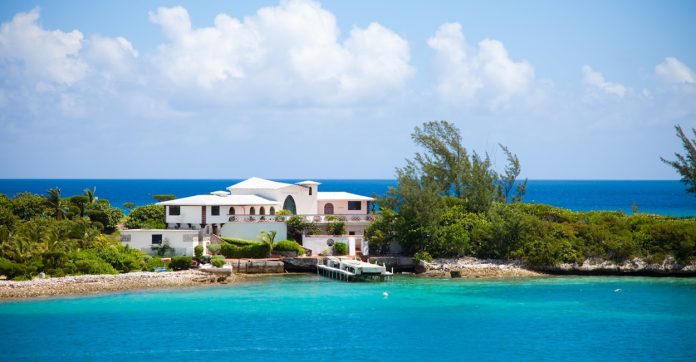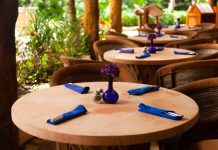
Imagine your Caribbean home, a space where the breeze dances through open windows and life flows as freely as the nearby sea. But what if mobility challenges threaten this idyllic setting? Fear not, because blending accessibility with tropical aesthetics is not only possible; it’s an art form you can master.
This guide dives into tailoring classic Caribbean architecture for greater access without sacrificing style. From the Dominican Republic to Antigua, learn how homes can evolve with practical yet beautiful modifications. Discover interior designs that marry functionality and island flair, along with outdoor spaces designed for everyone to enjoy.
Plus, get savvy in selecting durable mobility products that stand up to tropical climates while complementing your unique living space.
1. Thoughtful Home Modifications
Blending mobility solutions with Caribbean aesthetics involves integrating ramps that match tropical timber and widening doorways with trims that resonate with the home’s original architecture. In Punta Cana, accessible paths lined with local flora and pocket doors exemplify how homes can evolve to be welcoming for everyone without detracting from their traditional charm. These adaptations ensure that functionality is seamlessly coated in elegance, making spaces safe and accessible while preserving the island vibe.
Punta Cana also leads in creating accessible beach experiences, with resorts incorporating specialized beach chairs and boardwalks that reach the waterline highlighting a comprehensive approach to inclusivity, ensuring everyone can enjoy the Caribbean’s picturesque shores without barriers.
The Bahamas’ commitment to inclusivity also extends to outdoor living areas designed for enjoyment by all. Here, ramps are not merely functional but are crafted from native stone or wood, reflecting the islands’ natural beauty.
Antigua and Barbuda’s approach to integrating mobility needs without sacrificing aesthetics showcases the possibilities of modern Caribbean living. Wide doorways framed by lush plants and smooth pathways laid with native stones are examples of design choices that prioritize ease of movement. Pocket doors and counters at accessible heights ensure that homes are not just visually appealing but are also fully functional for those with mobility challenges.
2. Selecting Appropriate Mobility Products
Choosing the right mobility aids is crucial in the Caribbean’s humid climate. Products designed to withstand such environments, like corrosion-resistant wheelchairs and scooters suited for varied terrains, are essential. Lift chairs that reflect tropical aesthetics not only aid mobility but also enhance the home’s decor, demonstrating that functionality and style can coexist harmoniously. Check out Restore Mobility for premium yet affordable options.
3. Community Involvement and Awareness
Building an inclusive Caribbean community extends beyond individual homes to encompass a broader commitment from local governments, businesses and residents. Initiatives to raise awareness about mobility challenges and the importance of accessibility in public spaces can foster a more inclusive environment. Workshops, seminars and inclusive design competitions encourage community participation and innovation, ensuring that accessibility is a shared responsibility.
4. Sustainable and Eco-Friendly Mobility Solutions
Incorporating eco-friendly mobility aids and solutions aligns with the Caribbean’s natural ethos and commitment to environmental sustainability. Solar-powered lifts, biodegradable materials for ramps and electric mobility scooters reduce the carbon footprint while providing efficient aid. These solutions not only support individuals with mobility challenges but also contribute to the preservation of the Caribbean’s pristine environment.
5. Technology-Enhanced Living for Greater Independence
Advancements in smart home technology offer unprecedented opportunities for enhancing mobility within Caribbean living spaces. Voice-activated systems, automated doors and smart lighting can significantly increase independence for individuals with mobility challenges. Integrating these technologies into homes ensures that residents can enjoy a high level of autonomy while maintaining the aesthetic integrity of their living spaces.
6. Training and Support Services for Caregivers
Recognizing the crucial role of caregivers in supporting individuals with mobility challenges, providing access to training and resources is essential. Workshops on the proper use of mobility aids, ergonomic care techniques and psychological support can empower caregivers with the skills and knowledge to provide effective assistance. Support networks and community groups also offer valuable spaces for sharing experiences and strategies for overcoming common challenges.
7. Advocating for Inclusive Tourism and Recreation
The Caribbean is a premier tourist destination, and advocating for inclusive tourism practices ensures that the beauty and allure of the islands are accessible to all visitors. Collaborating with tourism operators to offer accessible excursions, accommodations and facilities can significantly enhance the travel experience for individuals with mobility challenges. Promoting destinations that prioritize accessibility can also drive improvements across the industry, making the Caribbean a leader in inclusive tourism.
Expanding the Horizon of Accessibility in the Caribbean
By addressing these additional aspects, the Caribbean can further solidify its reputation as a region where beauty, culture, and inclusivity converge. In conclusion, transforming Caribbean living spaces to accommodate mobility needs while preserving their enchanting charm is not just a possibility but a reality that many have embraced. By thoughtfully integrating accessible features into the very fabric of island architecture and choosing mobility aids that withstand the elements without sacrificing style, we can ensure that the Caribbean remains a welcoming paradise for everyone.
This approach not only enhances the quality of life for those with mobility challenges but also enriches the Caribbean aesthetic, proving that functionality and beauty can coexist harmoniously.






























